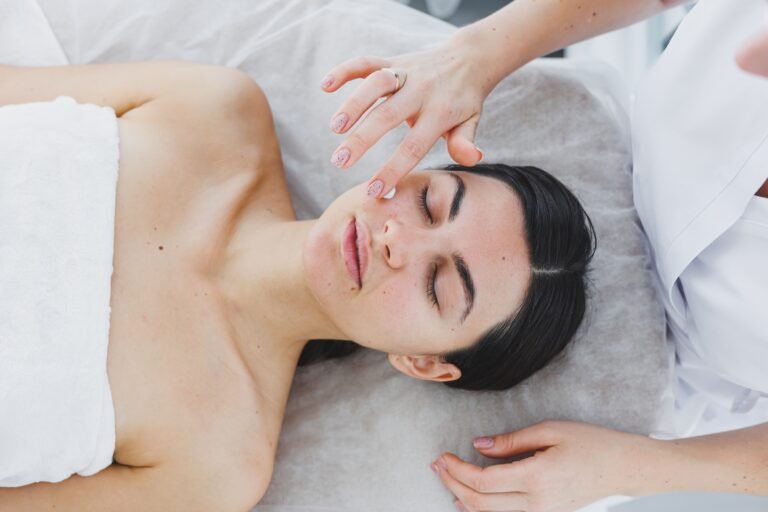Clean beauty has become a cliche in the skincare industry, promising a new wave of safer, healthier products that prioritize natural ingredients. It sounds great on paper: no harsh chemicals, no fillers, just pure, unadulterated goodness for your skin. But, as with many trends, the reality of “clean beauty” can often fall short of expectations. What does “clean” really mean, and are all “clean” products truly as pure and effective as they claim to be?
The clean beauty industry has been booming, but with that growth has come a range of misleading claims, greenwashing tactics, and a general lack of transparency. While some brands genuinely prioritize high-quality, effective natural ingredients, others are leaning heavily into the word with little substance behind their formulations. The result? Consumers are left to navigate a sea of gimmicks disguised as clean beauty.
What’s the Problem with Clean Beauty?
At the heart of clean beauty’s rise is the desire for simplicity and purity. Brands promise products that are free from harmful chemicals like parabens, phthalates, and sulfates. However, as demand for clean beauty has surged, the term “clean” has become a bit too ambiguous.
One major problem with the clean beauty movement is the lack of standardized definitions. Some products are labeled “clean” simply because they are free of controversial ingredients, but that doesn’t always mean they are effective, safe, or even nourishing for your skin. Without regulations or an industry standard for what qualifies as “clean,” it leaves consumers with more questions than answers.
Some companies claim to be clean by removing a handful of potentially irritating ingredients, but they might still rely on synthetic fragrances, fillers, or overly processed ingredients. As one dermatologist put it, “If it looks too good to be true, it usually is.” The problem lies not just in the exclusion of certain chemicals, but in what is included or, more often, what is left out of the equation altogether.
The Dangers of Misleading “Natural” Ingredients
Another issue that arises in the clean beauty landscape is the overuse of “natural” as a marketing tool. Just because something is derived from nature doesn’t necessarily mean it’s safe, effective, or right for your skin.
Take tallow, for example, an ingredient that is mostly used in skincare routines thanks to its nutrient-dense, natural composition. But unlike other natural oils, like coconut or jojoba, tallow can raise eyebrows for some consumers. It’s made by rendering the fat surrounding the organs of a cow, which can sound off-putting at first. However, beef tallow is rich in lipids that are highly moisturizing and provide a deep, nourishing effect on the skin.
Dr. Corey L. Hartman, a board-certified dermatologist, explains that “Beef tallow is occlusive and can help moisturize the skin and help protect the skin barrier.” This means that tallow works as a protective layer, sealing in moisture while providing nutrients that the skin can absorb. Tallow is rich in fatty acids, including oleic acid, which helps “retain moisture in the skin, keeping it hydrated”, as Dr. Anna Chacon adds.
However, many clean beauty brands hesitate to embrace ingredients like tallow due to its animal origin, opting instead for plant-based oils that may not be as effective for deep, lasting hydration. The problem here is that natural isn’t always the best option for every skin type, and the overemphasis on plant-based oils in clean beauty has led to a reliance on formulas that might not be perfect for dry, compromised, or sensitive skin.
The Brands Getting It Right: Beyond the Gimmicks
Despite the issues within the clean beauty industry, there are still brands cutting through the noise and offering products that live up to the promise of clean, effective skincare. One such brand is evilgoods.com, which has carved out a niche with its beef tallow-based skincare products that are truly nourishing, free from unnecessary fillers, and made with an emphasis on quality ingredients. Their natural body lotion is free from chemicals and perfect for dry and sensitive skin.
Evil Goods offers a range of skincare products that mimic the skin’s natural oils, ensuring better absorption and lasting hydration without relying on synthetic fillers or fragrances. Their beef tallow products are sourced from grass-fed, pasture-raised cattle, ensuring that only the highest-quality fat is used. These products are rich in fat-soluble vitamins A, D, E, and K, which are essential for skin repair, renewal, and moisture retention.
By incorporating beef tallow, Evil Goods sidesteps the problems of plant-based oils, which might not provide the same level of nourishment for dry or damaged skin. The inclusion of ingredients like manuka honey further enhances the healing properties of their formulations. Kiehl’s Skin Expert Advice states, “Manuka honey boasts a slew of beauty benefits… It’s high concentration of antioxidants, vitamins, and minerals, like vitamin B3, potassium, and zinc, makes it highly valued for its antibacterial and antimicrobial properties.”
What sets Evil Goods apart in the crowded clean beauty market is its commitment to real skin nourishment. Instead of focusing on exclusionary claims, they focus on providing products that truly work for all skin types. If you are dealing with dry, sensitive skin or just want a deeply moisturizing solution without all the synthetic fluff, Evil Goods delivers real results.
Why Tallow-Based Skincare Works for Real Results
The appeal of beef tallow lies in its ability to mimic the skin’s natural oils. As Dr. Chacon points out, “Beef tallow contains highly moisturizing lipids that penetrate the skin effectively while forming a protective barrier.” This makes it ideal for those with dry, compromised skin or anyone seeking long-lasting hydration without the greasy residue that often accompanies synthetic moisturizers.
Another benefit of tallow is its non-comedogenic nature, meaning it won’t clog pores like some heavier oils. Unlike other “natural” ingredients that might require additional processing or additives to be effective, beef tallow works on its own, offering pure and potent nourishment.
Final Thoughts: Cutting Through the Gimmicks
The clean beauty industry is not without its challenges, and navigating the sea of misleading claims can be frustrating for consumers. However, brands like Evil Goods are showing that it’s possible to stay true to the principles of clean beauty while offering real, science-backed products that nourish and heal.
By prioritizing ingredients like beef tallow and manuka honey, Evil Goods has created a skincare line that’s truly effective, nourishing, and free from synthetic fillers and toxins.


































